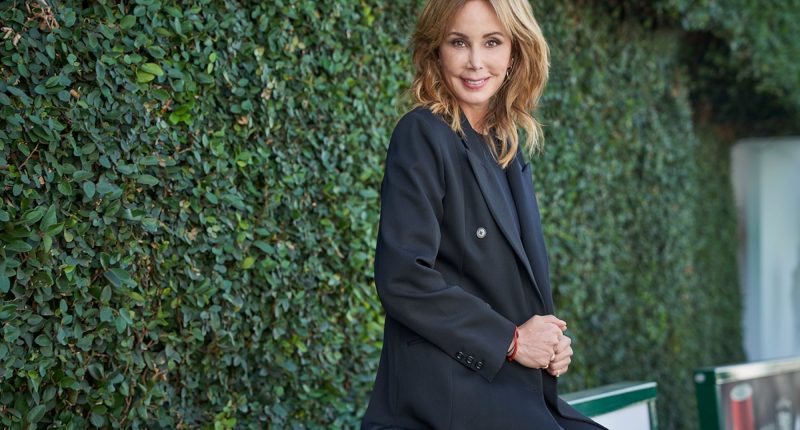
Liza Anderson, now founder of Anderson Group Public Relations, got her start in PR more than 20 years ago working for Warren Cowan of Rogers and Cowan. “Considered the godfather of PR,” Cowan was one of the first to represent Hollywood icons like Paul Newman and Elizabeth Taylor outside of the studio system in the 1950s, Anderson says.
Needless to say, a lot has changed in the decades since Anderson’s early PR days. Back then, she was “literally Xeroxing press kits and mailing them to reporters and television producers” to secure interviews for clients.
Related: What Is an Organic Growth Formula, and How Can It Help Your Business?
Entrepreneur sat down with the industry veteran to learn more about navigating today’s media landscape successfully, whether you’re new to the game or an established player.
“What do you want people to see when they type your name in Google?”
First, for newcomers: When trying to figure out if you need professional PR services at all, consider if you’re at the point where you want more visibility — and see others in similar places getting attention already, Anderson says.
“What do you want people to see when they type your name in Google?” she adds. “Let’s create those headlines together. [It’s time for PR] when you have anything — whether it’s yourself, a product, a project that you’re proud of — that you want to make noise [in our] crowded world.”
Related: Should You Hire Your Own Publicist? How to Stay Relevant in an Ever-Changing Business Landscape.
Of course, one of the most significant transformations in PR over the years has been the rise of the internet and social media, which add additional layers of complexity for anyone hoping to boost their image and can make it more difficult for PR professionals to forge the strong client relationships to help them do it, Anderson says.
“You were a bit more connected in a very strange way,” Anderson says of the pre-social-media era. “You had to call your client to tell them what was going on, whereas now, I’m always saying in my Zoom staff meeting, ‘Pick up the phone and call your client. You can email and text them, but there’s nothing like a good old-fashioned phone call.'”
“It’s [about] finding those little nuggets and those things that [make] you go, ‘Oh, this would be a great angle.'”
Despite the shifting media landscape, which includes the proliferation of influencers and AI (and, as it turns out, handsomely paid AI-generated influencers), some tricks of the trade do remain the same. The No. 1 most important way to determine if a PR specialist or firm is the right fit for you — or, alternatively, that you can actually help a given client — hasn’t changed much over the years.
“You have to put your heart into what you do,” Anderson says. “When you’re representing a client or a brand, you have to find the things that you love about them, the things that make you excited about working with them.”
And that remains consistent no matter how big or small a person or brand happens to be.
“I’m always taking meetings with people I don’t know,” Anderson says. “It’s [about] finding those little nuggets and those things that [make] you go, ‘Oh, this would be a great angle. This is what makes them special. This is why they’re so unique.’ And it’s no different than any relationship you have in real life.”
“Caring about somebody and making sure that you navigate people’s personal and emotional lives is so important. I don’t know if a computer is able to do that quite yet.”
PR can help you get on people’s radars for the right reasons — but it can be just as important when things go wrong. Having a PR professional guide your next steps when you find yourself at the center of a controversy can be invaluable. When facing backlash of any kind, the first question to consider is this, Anderson says: How did it get to this point?
That’s because the most effective PR approach hinges on if the person or brand experiencing backlash was a bystander or an active contributor to the events leading up to the controversy, Anderson explains. Based on that information, you can “come up with a game plan” — perhaps one that begins with a sincere apology or taking a step back, depending on the situation.
It’s clear that some PR secrets withstand the test of time — even two-plus decades’ worth filled with ever-evolving technologies and trends — and Anderson’s had a front-row seat through it all. But when it comes to how the industry might continue to grow and change over the next several years or decades, even seasoned experts like Anderson don’t have a reliable crystal ball.
One development is all but certain, though: the increasing use of generative AI. “I’m like, ‘We’re all going to be replaced by ChatGPT,'” Anderson quips.
“I’m going to be talking to robots as journalists,” she continues. “People are going to be able to come up with their own articles and just place them on their own TV shows. I can see it happening in so many different ways, where I don’t even know if we’ll exist 10 years from now. I hope so. But again, that human connection and caring about somebody and making sure that you navigate people’s personal and emotional lives is so important. I don’t know if a computer is able to do that quite yet.”
This article is from Entrepreneur.com









